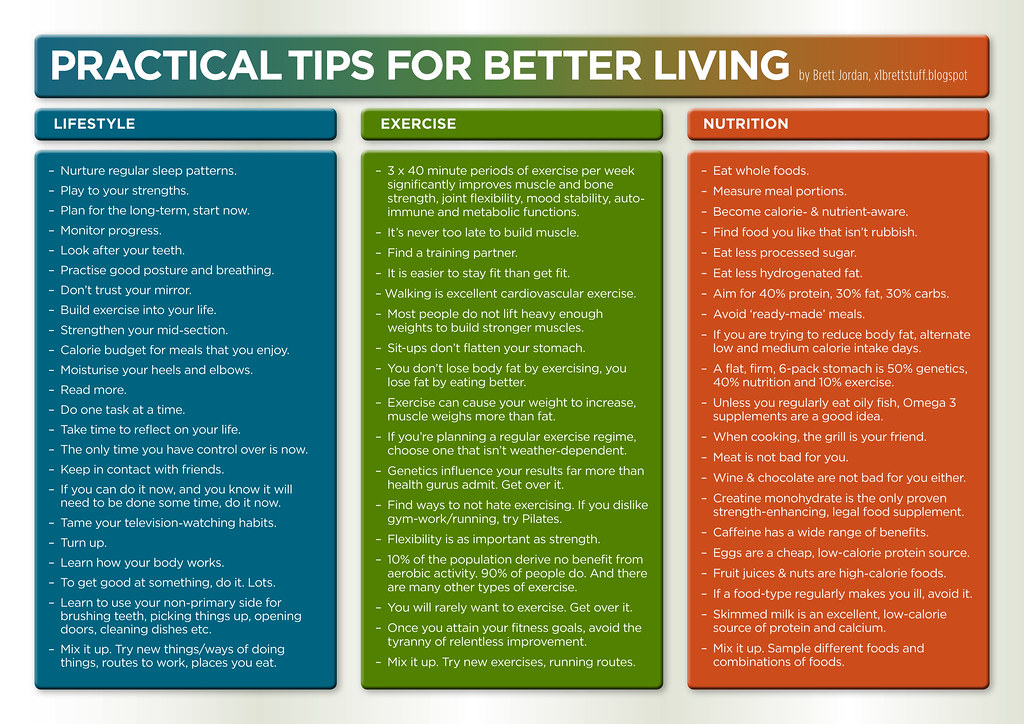Welcome to our blog post, where we will be delving into the enlightening world of mindful meditation and exploring the key concepts discussed in the YouTube video titled, “The Ultimate Guide to Mindful Meditation: Unlocking Inner Peace.” In this thought-provoking video, we are taken on a journey towards a deeper understanding of how mindful meditation can transform our lives, allowing us to unlock the hidden portals to inner peace. With a descriptive tone and friendly demeanor, we will unravel the wisdom shared in the video, offering you a comprehensive guide to embracing mindfulness and cultivating tranquility within. So, grab a cozy spot, let’s dive in, and embark on a transformative voyage of self-discovery, together.
Table of Contents
- 1. The Power of Mindful Meditation in Finding Inner Peace
- 2. Understanding the Science Behind Mindful Meditation
- 3. Practical Tips to Incorporate Mindful Meditation into Your Daily Routine
- 4. Harnessing the Benefits of Mindful Meditation for a Peaceful and Balanced Life
- Q&A
- Final Thoughts
1. The Power of Mindful Meditation in Finding Inner Peace

Mindful meditation is a powerful tool that can help you find inner peace and achieve a calm and centered state of mind. By practicing this form of meditation, you can cultivate a deep sense of awareness and learn to focus your attention on the present moment.
One of the main benefits of mindful meditation is its ability to reduce stress and anxiety. By training your mind to stay present, you can let go of worries about the past or future, and instead, embrace the here and now. This practice allows you to detach from negative thoughts and emotions, leading to a greater sense of peace and tranquility.
Furthermore, mindful meditation can enhance your overall well-being by improving your mental clarity and increasing your ability to handle life’s challenges with a calm and collected mindset. It helps you develop a non-judgmental attitude towards your thoughts and experiences, enabling you to respond to them with compassion and acceptance.
During the process of mindful meditation, it is essential to focus on your breath. This serves as an anchor point that helps you stay rooted in the present moment. As you close your eyes and take slow, deep breaths, allow your body and mind to relax. Notice the sensation of each breath as it enters and leaves your body. Let any distracting thoughts or worries simply pass by, as you gently bring your attention back to your breath.
To deepen your practice, you can incorporate mindful meditation into your daily routine by setting aside a few minutes each day for quiet reflection. Find a peaceful spot where you can sit comfortably, away from distractions. Start with just a few minutes and gradually increase the duration as you become more accustomed to the practice. Remember, consistency is key.
- Benefits of Mindful Meditation:
- Reduces stress and anxiety
- Enhances mental clarity
- Increases mindfulness and presence
- Improves overall well-being
Embracing the power of mindful meditation can have a profound impact on your life. It offers you a pathway to finding inner peace, improving your mental and emotional well-being, and enabling you to navigate life’s ups and downs with grace and tranquility.
2. Understanding the Science Behind Mindful Meditation

In this section, we will delve deeper into the fascinating science behind mindful meditation. By understanding the underlying principles, you will gain valuable insights into why this practice is so effective in promoting overall well-being and mental clarity.
1. The Brain’s Neural Pathways:
Mindful meditation has been found to have a profound impact on the brain’s neural pathways. Regular practice helps rewire and strengthen connections, leading to improved cognitive abilities and emotional regulation. Studies have shown that it can increase gray matter concentration in regions associated with attention, empathy, and compassion.
2. The Stress Response:
One of the most significant benefits of mindful meditation lies in its ability to reduce stress. When we experience stress, the amygdala, a part of the brain responsible for emotional responses, becomes highly active. Mindful meditation activates the prefrontal cortex, which regulates emotions and aids in stress reduction. This practice also lowers the production of cortisol, the stress hormone, leading to a greater sense of calm and relaxation.
3. Improving Focus and Attention:
We live in a world of constant distractions, making it challenging to maintain focus. Mindful meditation has been found to enhance attention span and focus by promoting a state of present-moment awareness. Through mindfulness, we train our minds to refocus on the present whenever it wanders, leading to improved concentration and productivity.
4. Cultivating Self-Compassion:
Mindful meditation cultivates a positive and compassionate relationship with ourselves. By developing a non-judgmental attitude towards our thoughts and emotions, we become more accepting of ourselves and others. This newfound self-compassion can lead to higher levels of self-esteem, reduced feelings of loneliness, and improved overall well-being.
Embracing the science behind mindful meditation enhances our understanding of why this practice is widely regarded as a transformative tool for personal growth and self-improvement. By harnessing the power of our brain’s neural pathways, decreasing stress, improving focus, and fostering self-compassion, we can tap into the immense benefits that mindful meditation offers. So, let’s embark on this remarkable journey of self-discovery and unlock our full potential through the practice of mindfulness.
3. Practical Tips to Incorporate Mindful Meditation into Your Daily Routine

Incorporating mindful meditation into your daily routine is a wonderful way to cultivate inner peace and reduce stress. Here are some practical tips to help you seamlessly integrate this powerful practice into your day-to-day life:
1. Start small and be consistent. Begin with just a few minutes of meditation each day and gradually increase the duration as you become more comfortable. Consistency is key, so aim to practice at the same time and place every day. This will help you establish a routine and make it easier to stick with your meditation practice.
2. Create a sacred space. Designating a specific area in your home for meditation can enhance the sense of tranquility and focus. Remove any distractions, such as electronic devices, and decorate your space with soothing elements like candles, incense, or plants. Having a dedicated space will provide a physical reminder to prioritize your mindfulness practice.
3. Utilize guided meditation. Guided meditations can be a helpful tool, especially for beginners. These audio or video recordings walk you through the meditation process, providing instructions and cues to follow. You can find a wide variety of guided meditations available online, catering to different preferences and intentions.
4. Incorporate mindfulness into daily activities. Mindful meditation doesn’t always have to be a formal sit-down practice. You can cultivate mindfulness throughout your day by bringing awareness to simple activities like brushing your teeth, walking, or eating. Notice the sensations, thoughts, and emotions that arise during these moments and bring your attention back to the present.
5. Stay patient and gentle with yourself. It’s natural for the mind to wander during meditation, and that’s okay. When distractions arise, gently bring your focus back to your breath or whatever anchor you’re using. Remember that meditation is a lifelong journey, and each session is an opportunity for growth and self-discovery. Approach your practice with kindness and curiosity.
Incorporating mindful meditation into your daily routine may take some time and effort, but the benefits to your mental and emotional well-being are worth it. By following these practical tips, you can turn mindfulness into a regular practice that enhances your daily life and brings you a greater sense of peace and clarity. Take the first step today and embark on a transformative journey towards a more mindful existence.
4. Harnessing the Benefits of Mindful Meditation for a Peaceful and Balanced Life

In today’s fast-paced and hectic world, finding peace and balance can often seem like an impossible task. Thankfully, there is a powerful practice that can help us achieve these goals – mindful meditation.
Mindful meditation is a practice that involves bringing our full attention to the present moment, without judgment. By incorporating this practice into our daily routine, we can experience numerous benefits that enhance our overall well-being.
One of the main benefits of mindful meditation is stress reduction. By focusing on our breath and the sensations in our body, we can calm our mind and release the tension that accumulates throughout the day. This allows us to approach stressful situations with more clarity and composure.
In addition to stress reduction, mindful meditation can also improve our mental clarity and focus. By training our minds to be fully present, we cultivate a greater ability to concentrate on the task at hand. This increased focus can help us be more productive, make better decisions, and enhance our overall performance in various areas of life.
Mindful meditation is also known to boost emotional well-being. By practicing non-judgmental awareness of our thoughts and emotions, we develop a greater understanding and acceptance of ourselves. This can lead to increased self-compassion, improved mood regulation, and the ability to respond to challenging situations with greater emotional resilience.
Moreover, mindful meditation has been shown to enhance our relationships with others. When we cultivate present-moment awareness and non-judgment, we become better listeners and more empathetic individuals. This can strengthen our connections with loved ones, foster more effective communication, and build a deeper sense of understanding and compassion within our relationships.
So, whether you are seeking peace, balance, or improved well-being, incorporating mindful meditation into your daily routine can bring about remarkable transformations. Embrace the stillness and the power of the present moment, and watch as your life becomes more peaceful and balanced.
Q&A
Q: What is the main focus of the YouTube video?
A: The YouTube video titled “The Ultimate Guide to Mindful Meditation: Unlocking Inner Peace” aims to delve into the practice of mindful meditation and its impact on achieving inner peace.
Q: What is mindful meditation?
A: Mindful meditation is a technique that involves bringing one’s attention to the present moment, noticing thoughts, feelings, and bodily sensations without judgment. It cultivates self-awareness, acceptance, and a non-reactive mindset.
Q: How does mindful meditation contribute to inner peace?
A: Mindful meditation helps cultivate a calm and peaceful state of mind by fostering a deeper connection with one’s thoughts and emotions. It allows individuals to observe their mental processes and detach from negative or stressful thoughts, leading to a greater sense of inner peace.
Q: What are the benefits of practicing mindful meditation?
A: The benefits of practicing mindful meditation include reduced stress and anxiety, improved focus and concentration, heightened self-awareness, enhanced emotional well-being, increased resilience, and improved overall mental health.
Q: How can one start practicing mindful meditation?
A: To start practicing mindful meditation, find a quiet and comfortable space, sit in a relaxed position, close your eyes, and focus your attention on your breath. Gently observe the sensations that come with each inhalation and exhalation, acknowledging any thoughts or distractions without judgment.
Q: How long should one meditate for each session?
A: It is advised to begin with shorter sessions, such as 5 or 10 minutes, and gradually increase the duration as one becomes more comfortable. Ideally, practicing mindful meditation for at least 20 minutes per day can yield noticeable benefits.
Q: Can mindful meditation be combined with other relaxation techniques?
A: Absolutely! Mindful meditation can be complemented with various relaxation techniques such as progressive muscle relaxation, guided imagery, or even listening to calming music. Experimenting with different practices can deepen the sense of relaxation and inner peace.
Q: Are there any recommended resources for further exploration of mindful meditation?
A: Yes, there are several resources available for further exploration of mindful meditation. Books like ”The Miracle of Mindfulness” by Thich Nhat Hanh or “Wherever You Go, There You Are” by Jon Kabat-Zinn offer valuable insights. Additionally, there are numerous mindfulness apps and online courses that provide guided meditation sessions.
Q: Can mindful meditation be beneficial for everyone?
A: Mindful meditation can be beneficial for individuals of all ages and backgrounds. Regardless of whether one is a beginner or an experienced meditator, engaging in mindful meditation can help cultivate a greater sense of inner peace and well-being.
Q: How long does it take to notice the effects of mindful meditation?
A: The effects of mindful meditation can vary from person to person. Some individuals may experience immediate improvements in their mental well-being, while others may require consistent practice over a period of weeks or months to notice significant changes. Regardless, committing to a regular practice is key to reaping the benefits of mindful meditation.
Key Takeaways
In conclusion, we have delved into the depths of mindful meditation, discovering the keys to unlocking inner peace. Throughout this illuminating journey, we have learned that mindfulness is not only a practice but a way of life that cultivates a profound connection with our inner selves and the world around us.
From focusing on the present moment to embracing our thoughts and emotions with non-judgmental awareness, mindful meditation provides us with the tools to navigate the chaos of everyday life and find solace in the tranquility within. By taking time each day to tune into our breath, we can restore balance, clarity, and serenity to our minds.
We have explored a myriad of techniques that can guide us on this transformative path, such as body scan meditation, walking meditation, and loving-kindness meditation. These practices empower us to tune into the sensations of our bodies, embrace our natural surroundings, and radiate kindness towards ourselves and others.
It is important to remember that mindful meditation is a personal journey, and each individual will embark on their own unique path. It is a process that requires patience, perseverance, and an open mind. As we continue to commit ourselves to this practice, we will gradually unlock the door to our inner sanctuary and discover the true essence of inner peace.
So, let us embark on this extraordinary adventure together, embracing the wisdom and insights shared in this ultimate guide to mindful meditation. Let us cherish the moments of stillness, the moments of connection, and the moments of self-discovery. May this journey bring us closer to ourselves and lead us toward a lifetime of inner peace.
And remember, in the hustle and bustle of life, when chaos threatens to overwhelm, always return to the anchor of your breath, and find solace in the remarkable power of mindful meditation.
